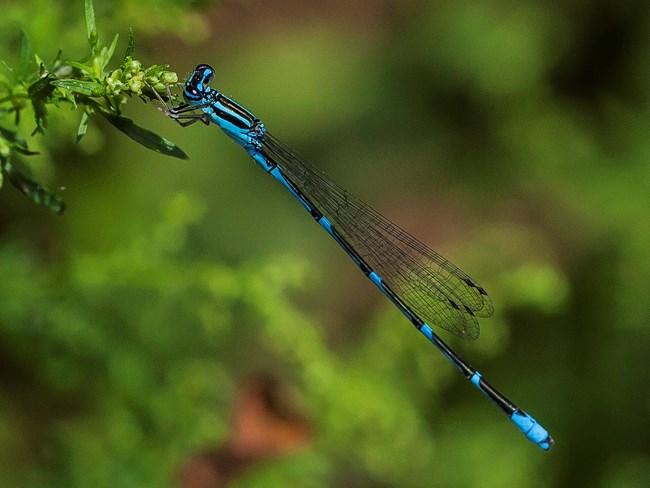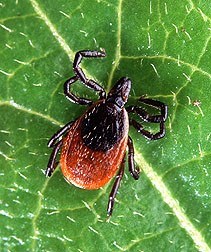
Yehyun Kim / Friends of Acadia We shriek, spray, and slap them away and often view them as a nuisance. Do they do any good? What are they up to anyway? Invertebrates, organisms without backbones, like insects have their own agenda, performing ecological essential tasks from consumption, pollination, and decomposition. Although many may be unfamiliar to us, invertebrates make up a majority of the species in the animal kingdom. Acadia continues to learn about insect species through citizen- science efforts like Bioblitz, documenting species occurrences to provide estimates of species richness, and identify rare and unique species. Below is a snapshot of some of the species most notably found through the seasons of Acadia.

NPS SpringBlack Flies are a common nuisance in Maine during spring, the season of the itch. Their breeding grounds are streams or any areas with moving water. Black flies are sensitive to water pollution, therefore, healthy populations of black flies indicate good water quality. Only females bite and their saliva is an allergen, causing flare ups and itchiness. Although the itchiness subsides, it returns days and even weeks later, making the black fly bite so infamous in Maine.

NPGallery SummerDragonflies and Damselflies are easily recognizable with their large size, four horizontal wings, and unique flight pattern. Dragonflies tend to be larger and bulkier, and spread their wings out when at rest, wheras damselflies are more slender and fold their wings together at rest. Both begin as aquatic insects in their larval stage, then crawl out of the water, cracking open their exoskeleton, releasing its body and wings. They are expert fliers and can hover up and down like a helicopter. Both larval and adult dragonflies are carnivores that feed on mosquitos, helping control the mosquito population. You can often see them flying rapidly over waterbodies or gardens.
Pollinators are extremely important because they are vital in the production of healthy crops and are essential components for a thriving ecosystem, supporting biodiversity. Check out the Wild Gardens of Acadia to spot pollinators. Read in-depth about some of Acadia's pollinators. 
NPS FallTicks are widespread in Maine and found throughout most seasons. They thrive in wooded and open grassy areas. In the same family as spiders, there are hundreds of tick species, but the one of the most common tick species in this area are deer ticks. They are reddish color with a black shield, have eight legs, and are about the size of a sesame seed. As parasites, ticks infect their hosts, especially humans, with the microorganisms they carry, including Lyme’s disease, a serious bacterial infection. There are several ways to prevent tick bites. Learn more on how to protect yourself from ticks on our safety page.
The Brown Tailed Moth is an invasive species of Acadia and cause a forest and human health concern. As caterpillars, they have poisonous hairs that cause dermatitis, similar to poison ivy from either touching it or indirectly coming into contact with airborne hairs. It causes a rash that lasts several hours and can be more severe and last longer for those who are particularly sensitive. In addition, they contribute to the mortality of hardwood trees and shrubs from feeding damage. WinterSnowfleas are a tiny, wingless, soil living creatures. They eat decaying matter such a leaves, moss, and fungi. They are not related to fleas, but belong to a group called Springtails. They do not bite, but have the ability to jump 100 times their body length. Because of the snow’s insulation and the anti-freezes snowfleas produce, they are able to withstand Maine’s harsh winter and you can often find them accumulate in footprints left in the snow. Related Information |
Last updated: September 19, 2023
